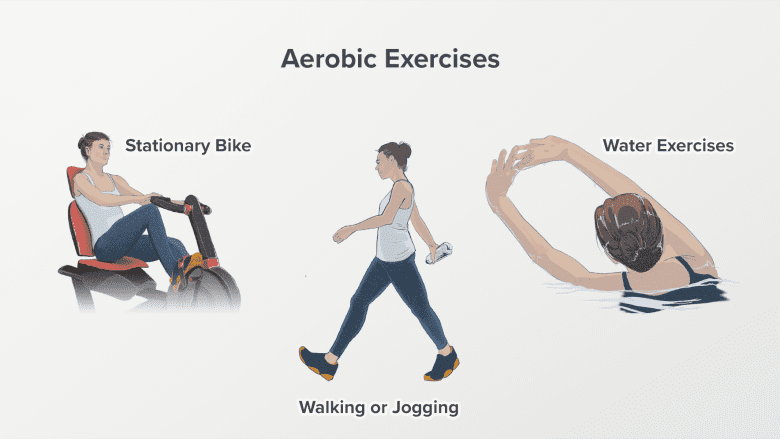Types of Exercises
| Types of Exercises | |
| Aerobic Exercises | It would include those actions that raise the heartbeat and increase the rate of breathing. |
| Strength Training | The activities involved are those of resistance exercises involving weight and bodyweight training. |
| Flexibility and balance exercises | Flexibility exercises, including yoga and stretching exercises, make the body create flexibility and it can prevent an injury. |
Aerobic Exercises

These include running, swimming, cycling among others. Such
forms of exercises increase the cardiovascular endurance of a person as
well as improve the function of the lungs. They burn body fat, build up
oxygen supply, and develop the heart. Hoeger & Hoeger, 2013 describe
that continuous aerobic exercise has been proved to maintain weight
within a healthy range and reduce the risk of heart diseases.
Strength Training
The
activities involved are those of resistance exercises involving weight
training, resistance bands, and bodyweight training activities like
push-ups and squats. According to Sun, Wang, & Chen (2022), strength
training not only helps in mass building but also in improving the
density of the bones and can avoid osteoporosis. The training is
utilized to control metabolic systems and help in the maintenance of
long-term weight management.
Flexibility and Balance Exercises